Author Photo And Bio
In a month one or two of those might change but that's how I feel on this Wednesday morning at the end of January.
 1. Sentimental Education: The Story of a Young Man by Gustave Flaubert (1869).
1. Sentimental Education: The Story of a Young Man by Gustave Flaubert (1869).
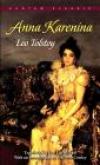 2. Anna Karenina by Leo Tolstoy (1877). Anna’s adulterous love affair with Count Vronsky—which follows an inevitable, devastating road from their dizzyingly erotic first encounter at a ball to Anna’s exile from society and her famous, fearful end—is a masterwork of tragic love. What makes the novel so deeply satisfying, though, is how Tolstoy balances the story of Anna’s passion with a second semiautobiographical story of Levin’s spirituality and domesticity. Levin commits his life to simple human values: his marriage to Kitty, his faith in God, and his farming. Tolstoy enchants us with Anna’s sin, then proceeds to educate us with Levin’s virtue.
2. Anna Karenina by Leo Tolstoy (1877). Anna’s adulterous love affair with Count Vronsky—which follows an inevitable, devastating road from their dizzyingly erotic first encounter at a ball to Anna’s exile from society and her famous, fearful end—is a masterwork of tragic love. What makes the novel so deeply satisfying, though, is how Tolstoy balances the story of Anna’s passion with a second semiautobiographical story of Levin’s spirituality and domesticity. Levin commits his life to simple human values: his marriage to Kitty, his faith in God, and his farming. Tolstoy enchants us with Anna’s sin, then proceeds to educate us with Levin’s virtue.
 3. Middlemarch by George Eliot (1871–72). Dorothea Brooke is a pretty young idealist whose desire to improve the world leads her to marry the crusty pedant Casaubon. This mistake takes her down a circuitous and painful path in search of happiness. The novel, which explores society’s brakes on women and deteriorating rural life, is as much a chronicle of the English town of Middlemarch as it is the portrait of a lady. Eliot excels at parsing moments of moral crisis so that we feel a character’s anguish and resolve. Her intelligent sympathy for even the most unlikable people redirects our own moral compass toward charity rather than enmity.
3. Middlemarch by George Eliot (1871–72). Dorothea Brooke is a pretty young idealist whose desire to improve the world leads her to marry the crusty pedant Casaubon. This mistake takes her down a circuitous and painful path in search of happiness. The novel, which explores society’s brakes on women and deteriorating rural life, is as much a chronicle of the English town of Middlemarch as it is the portrait of a lady. Eliot excels at parsing moments of moral crisis so that we feel a character’s anguish and resolve. Her intelligent sympathy for even the most unlikable people redirects our own moral compass toward charity rather than enmity.
 4. Lolita by Vladimir Nabokov (1955). “Lolita, light of my life, fire of my loins. My sin, my soul.” So begins the Russian master’s infamous novel about Humbert Humbert, a middle-aged man who falls madly, obsessively in love with a twelve-year-old “nymphet,” Dolores Haze. So he marries the girl’s mother. When she dies he becomes Lolita’s father. As Humbert describes their car trip—a twisted mockery of the American road novel—Nabokov depicts love, power, and obsession in audacious, shockingly funny language.
4. Lolita by Vladimir Nabokov (1955). “Lolita, light of my life, fire of my loins. My sin, my soul.” So begins the Russian master’s infamous novel about Humbert Humbert, a middle-aged man who falls madly, obsessively in love with a twelve-year-old “nymphet,” Dolores Haze. So he marries the girl’s mother. When she dies he becomes Lolita’s father. As Humbert describes their car trip—a twisted mockery of the American road novel—Nabokov depicts love, power, and obsession in audacious, shockingly funny language.
 5. The Great Gatsby by F. Scott Fitzgerald (1925). Perhaps the most searching fable of the American Dream ever written, this glittering novel of the Jazz Age paints an unforgettable portrait of its day— the flappers, the bootleg gin, the careless, giddy wealth. Self-made millionaire Jay Gatsby, determined to win back the heart of the girl he loved and lost, emerges as an emblem for romantic yearning, and the novel’s narrator, Nick Carroway, brilliantly illuminates the post–World War I end to American innocence
5. The Great Gatsby by F. Scott Fitzgerald (1925). Perhaps the most searching fable of the American Dream ever written, this glittering novel of the Jazz Age paints an unforgettable portrait of its day— the flappers, the bootleg gin, the careless, giddy wealth. Self-made millionaire Jay Gatsby, determined to win back the heart of the girl he loved and lost, emerges as an emblem for romantic yearning, and the novel’s narrator, Nick Carroway, brilliantly illuminates the post–World War I end to American innocence
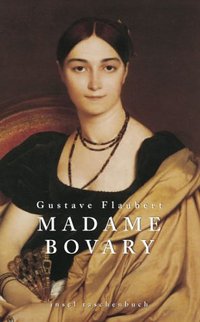 6. Madame Bovary by Gustave Flaubert (1857). Of the many nineteenth-century novels about adulteresses, only Madame Bovary features a heroine frankly detested by her author. Flaubert battled for five years to complete his meticulous portrait of extramarital romance in the French provinces, and he complained endlessly in letters about his love-starved main character— so inferior, he felt, to himself. In the end, however, he came to peace with her, famously saying, “Madame Bovary: c’est moi.” A model of gorgeous style and perfect characterization, the novel is a testament to how yearning for a higher life both elevates and destroys us.
6. Madame Bovary by Gustave Flaubert (1857). Of the many nineteenth-century novels about adulteresses, only Madame Bovary features a heroine frankly detested by her author. Flaubert battled for five years to complete his meticulous portrait of extramarital romance in the French provinces, and he complained endlessly in letters about his love-starved main character— so inferior, he felt, to himself. In the end, however, he came to peace with her, famously saying, “Madame Bovary: c’est moi.” A model of gorgeous style and perfect characterization, the novel is a testament to how yearning for a higher life both elevates and destroys us.
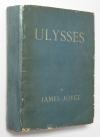 7. Ulysses by James Joyce (1922). Filled with convoluted plotting, scrambled syntax, puns, neologisms, and arcane mythological allusions, Ulysses recounts the misadventures of schlubby Dublin advertising salesman Leopold Bloom on a single day, June 16, 1904. As Everyman Bloom and a host of other characters act out, on a banal and quotidian scale, the major episodes of Homer’s Odyssey—including encounters with modern-day sirens and a Cyclops—Joyce’s bawdy mock-epic suggests the improbability, perhaps even the pointlessness, of heroism in the modern age.
7. Ulysses by James Joyce (1922). Filled with convoluted plotting, scrambled syntax, puns, neologisms, and arcane mythological allusions, Ulysses recounts the misadventures of schlubby Dublin advertising salesman Leopold Bloom on a single day, June 16, 1904. As Everyman Bloom and a host of other characters act out, on a banal and quotidian scale, the major episodes of Homer’s Odyssey—including encounters with modern-day sirens and a Cyclops—Joyce’s bawdy mock-epic suggests the improbability, perhaps even the pointlessness, of heroism in the modern age.
 8. Rabbit Angstrom— Rabbit, Run (1960), Rabbit Redux (1971), Rabbit Is Rich (1981), Rabbit at Rest (1990)— by John Updike. Read as four discrete stories or as a seamless quartet, the Rabbit novels are a tour de force chronicle, critique, and eloquent appreciation of the American white Protestant middle-class male and the swiftly shifting culture around him in the last four decades of the twentieth century. From his feckless youth as a promising high school athlete and unready husband and father in Rabbit, Run; through vulgar affluence, serial infidelity, and guilt as a car dealer in Rabbit Redux; to angry bewilderment over 1970s social upheaval in Rabbit Is Rich, the meaningfully named Rabbit Angstrom gamely tries to keep up with it all, to be a good guy. But the world is too much with, and for, Rabbit, who staggers through literal and metaphorical heart failure before finally falling in Rabbit at Rest.
8. Rabbit Angstrom— Rabbit, Run (1960), Rabbit Redux (1971), Rabbit Is Rich (1981), Rabbit at Rest (1990)— by John Updike. Read as four discrete stories or as a seamless quartet, the Rabbit novels are a tour de force chronicle, critique, and eloquent appreciation of the American white Protestant middle-class male and the swiftly shifting culture around him in the last four decades of the twentieth century. From his feckless youth as a promising high school athlete and unready husband and father in Rabbit, Run; through vulgar affluence, serial infidelity, and guilt as a car dealer in Rabbit Redux; to angry bewilderment over 1970s social upheaval in Rabbit Is Rich, the meaningfully named Rabbit Angstrom gamely tries to keep up with it all, to be a good guy. But the world is too much with, and for, Rabbit, who staggers through literal and metaphorical heart failure before finally falling in Rabbit at Rest.
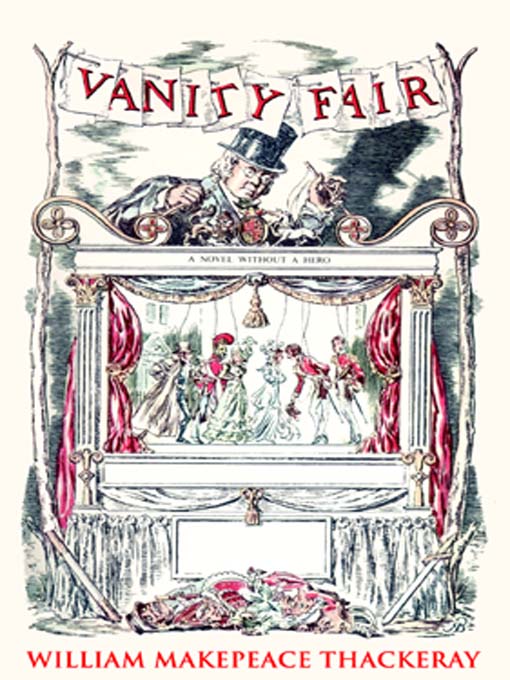 9. Vanity Fair by William Makepeace Thackeray (1847–48). The subtitle is “A Novel Without a Hero,” and never was a hero more unnecessary. In Becky Sharp, we find one of the most delicious heroines of all time. Sexy, resourceful, and duplicitous, Becky schemes her way through society, always with an eye toward catching a richer man. Cynical Thackeray, whose cutting portraits of society are hilarious, resists the usual punishments doled out to bad Victorian women and allows that the vain may find as much happiness in their success as the good do in their virtue.
9. Vanity Fair by William Makepeace Thackeray (1847–48). The subtitle is “A Novel Without a Hero,” and never was a hero more unnecessary. In Becky Sharp, we find one of the most delicious heroines of all time. Sexy, resourceful, and duplicitous, Becky schemes her way through society, always with an eye toward catching a richer man. Cynical Thackeray, whose cutting portraits of society are hilarious, resists the usual punishments doled out to bad Victorian women and allows that the vain may find as much happiness in their success as the good do in their virtue.
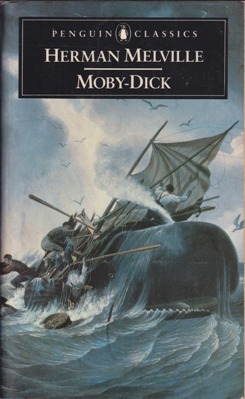 10. Moby-Dick by Herman Melville (1851). This sweeping saga of obsession, vanity, and vengeance at sea can be read as a harrowing parable, a gripping adventure story, or a semiscientific chronicle of the whaling industry. No matter, the book rewards patient readers with some of fiction’s most memorable characters, from mad Captain Ahab to the titular white whale that crippled him, from the honorable pagan Queequeg to our insightful narrator/surrogate (“Call me”) Ishmael, to that hell-bent vessel itself, the Pequod.
10. Moby-Dick by Herman Melville (1851). This sweeping saga of obsession, vanity, and vengeance at sea can be read as a harrowing parable, a gripping adventure story, or a semiscientific chronicle of the whaling industry. No matter, the book rewards patient readers with some of fiction’s most memorable characters, from mad Captain Ahab to the titular white whale that crippled him, from the honorable pagan Queequeg to our insightful narrator/surrogate (“Call me”) Ishmael, to that hell-bent vessel itself, the Pequod.